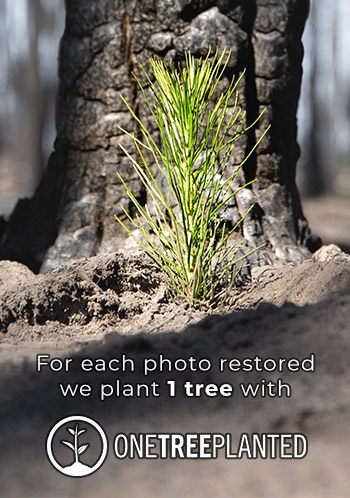The Origins Of Photography
Here are some fun facts about how the pioneers of this visual art produced their pictures back in the day and the most important inventions.

Fun facts about the first photos ever taken
The process of photography was so complicated and time-consuming during the early years. Things were a world apart from the current point-and-shoot mechanisms.
Here are some facts on how photos were made in the past that you may find funny or intriguing:
- Joseph Niepce required 8 hours of exposure to capture the first photo in history. The 1827 photograph is known as ‘View from the Window at Le Gras’. Today, it takes just a click to shoot something with your camera.
- The first photographic ‘paper’ wasn't paper, but asphalt. Niepce applied asphalt varnish on a pewter plate to shoot the first photograph.
- Camera obscura is considered the first modern camera. Interestingly, it is still used as a particular film camera and in making integrated circuits.
- James Clerk Maxwell is a physicist famous for the “second great unification in physics.” Interestingly, he is also the first to produce colour photography.
- The first aerial photograph was taken in 1858 by Gaspar Felix Tournachon. It was a shot of Paris from a balloon. However, the photo is no longer in existence.
- In 1840, photos began to be retouched and made into ‘colour’ by using watercolour. It took another two decades before Thomas Sutton shot an actual colour photograph using a camera.
- Early photographers used cassettes in place of modern photographic films. These cassettes weight 15 pounds and captured only 12 shots.
- The first digital camera could capture images at just 0.01 megapixels. Today, you cannot imagine a photograph with less than 10 megapixels of resolution.
- The first digital camera weighed over 8 pounds, four times more than that of current DSLRs.
- The term ‘megapixel’ was not coined until 1984.
- Today, only 20% of photos taken with digital cameras make it to printing.
The Inventions that Helped the Emergence of Photography
There have been thousands of inventions and developments over the centuries that led to the emergence of photography into what you see it today to be. Some of the groundbreaking designs that brought about significant changes in this field are as follows:
Camera Obscura
The first camera, known as Camera Obscura, was a simple darkened room with small openings on a wall. Photographers allowed light to project from the hole to the opposite wall to create an image. The first camera obscura dates from the 5th century B.C. in Greece and China.
Photochemistry
The German scholar Johann Heinrich Schulze applied photochemistry back in 1725. He used silver salts to create permanent images employing the rays of the sun.
Daguerreotype
French inventor Louis Daguerre worked with Joseph Niepce to create a technique called Daguerreotype in 1837. They exposed iodised silver plates to light to create an image. Then, they used mercury fumes to develop the picture. The result was a much refined and sharper photo. The exposure time came down from several hours to just 10 minutes.
Calotype
British inventor William Talbot developed the Calotype method in 1841. He used photosensitive paper in place of the metal plates utilised in Daguerreotype.
Some of the other notable developments that shaped the history of photography include:
- Wet-Collodion process in 1851
- The development of dry plates in 1871
- The emergence of the flexible roll film in 1884
- In 1907, autochrome made it easier to produce colour photographs commercially

Many more advancements took place overtime to bring photography to the digital format. In 1957, researchers scanned a photo for the first time by transferring it to a computer and converting black or white pixel information into binary 1 or 0 data. A few years later, Steven Sasson of Kodak invented the first digital camera in 1975, transforming the entire photography landscape forever.
No worries! We can fix it and make it beautiful.
from our blog
You might also like
There's a first time for everything. And that includes digitising photos!. Find about the clever minds that made this possible.
There are hundreds of historical photos that have been colourised and seem better than their original versions. Here is our selection of iconic pictures from history.
The Victorian Era was a period that marked the rule of Queen Victoria. It was an era with many inventions, a lot of which are still in use today. Photography was one of them, and undoubtedly one of the greatest.
The process of photo retouching has been there for as long as photography has been in existence. Photographers would paint or draw on top of their film, scrape it with knives, or combine multiple negatives to create one print.





